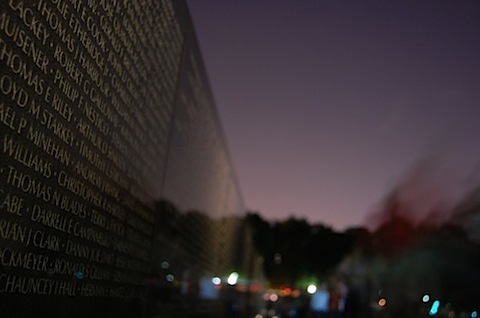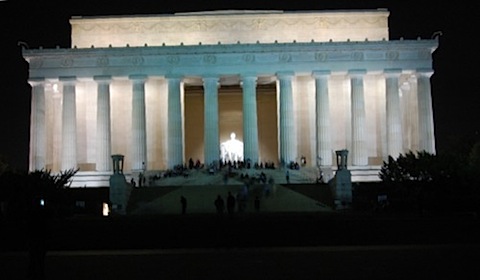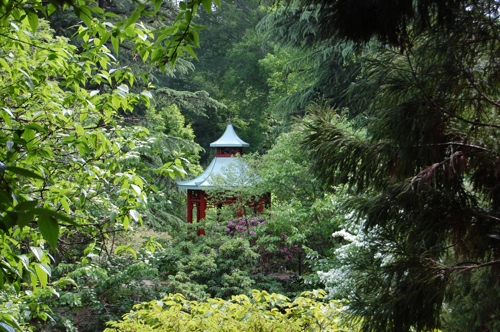Last Updated on October 12, 2024 by Dawn Head
I’ve lived in Washington, DC for almost five years and am getting ready to move. As with many places I’ve lived, I’ve enjoyed “playing tourist” while I living here. However, even after doing so many things and seeing so many sites, I still have a few things I either want to do again or experience for the first time.
I also put together a list of what I will miss and won’t miss about living in Washington, DC as it helps me appreciate what I had. At the same time, it helps me to remember what I didn’t like, hopefully making moving a little bit easier.
Here are some things to know about Washington, DC, whether you are visiting for a short stay or moving here.
Things to know about Washington, DC
I always heard that, second to Washington, DC’s Cherry Blossom Festival, the best time to visit our area’s monuments is at night. I finally made the walk happen. Check out the spectacular pictures.







What I’ll miss about Washington, DC
While there are so many great things about living here, these are my favorite.
The Metro (D.C.’s subway system)
You know I’m a green traveler, and I love taking public transportation system. It is convenient, accessible, and all-around easy. Interestingly, this is also on my list of what I don’t like about Washington, DC.

photo credit: ChrisDag
Politics
If you enjoy politics at all, you will always have lots to discuss here.
Washington Post (especially the Sunday edition)
I love supporting my local newspaper.
Variety of restaurants
Read below for some excellent sustainable recommendations.
Diversity
I love experiencing other cultures, and am happy to be able to do so in the town in which I live.
Neighborhoods (especially Eastern Market, DuPont Circle, and U Street)
Each has their own style, character, flair, and special charms.

Free stuff to do
I appreciate when large cities support their community with free events. Washington, DC is a wonderful place to live and visit because of all the free things to do. The Smithsonian museums are free. The monuments are free.
You can plan ahead and have a tour of the State Department, the Department of the Interior for free. You can visit the Capital, the Supreme Court, and the Library of Congress for free.
Walking everywhere
Walking and biking are my favorite things to do, and I love living in a city in which I don’t have to drive or catch an Uber or Lyft any time I want to go somewhere. Though, you will find Lyfts and Ubers all around Washington, DC, so if you are traveling here, keep that in mind.
D.C. Public Library
In my ongoing quest to be green, I check books out from the Washington, DC public library weekly. I frequent this library for everything except the newspaper, which I subscribe to on Sundays.
Go to the Library of Congress and get a Reader’s Card which makes a fun souvenir. With it, you can use the Reading Room. You must be at least 16 years old.
The Monuments (during the day and night)
I never tire of seeing them. I love that they are constant reminders for us locals to reflect on in the course of our day-to-day lives.
More things to know about Washington, DC
What I dislike about Washington, DC
It is sometimes helpful to think of things you don’t like when you are moving from a place. In my effort to focus on the negatives, I remember Washington, DC has plenty of quirks and annoyances that I’m looking forward to leaving behind.
Lack of parking
This may sound controversial as you know I like to walk or find a bike route wherever I go. My second choice is public transportation. So you must understand, if I can’t do any of these, I am already annoyed I have to drive.
The Metro (subway)
While I’ll miss the easy commute to work, I’m happy to leave behind the Metro’s constant delays, crowds, and rising fares.
Politics
Again, I love it and sometimes don’t. Overall, I appreciate the political atmosphere and buzz in D.C., but only to a point. Too many people are too consumed with politics to care about anything else. In addition, with so many people working for the government, it’s only natural that this is a frequent topic.
High cost of living
D.C. is extremely expensive. It’s not quite as expensive as New York, but with so many people living on nonprofit salaries, it’s pretty pricey.
Transient nature
In part because of the changing politics and high cost of living, moving seems like the only constant in D.C. If you’re not from Washington, DC, and/or you don’t have family here, chances are you arrive, stay for a few years, and move away.
Bureaucracy
Whether it’s getting your car inspected by the DMV or simply getting a parking permit for a moving truck, the stereotypical government bureaucracy runs rampant in the city.
Impossible to escape
If you live almost anywhere within the city itself, you’ll find that there are few major roads that allow you to quickly and easily get out of or around the city. It shouldn’t take 30 minutes to drive the 4 miles from Capitol Hill to Georgetown in no traffic, but it always does.
Things to know about Washington, DC: Car-free camping
Washington, D.C. may be one of the most accessible cities in the country in terms of public transportation. If you can take the Metro or the bus to Dupont Circle, the Capitol, Georgetown, the (National) Mall, or even (Mazza Gallerie shopping) mall, why can’t you take public transportation to a campsite?
It turns out you can, and it’s called “car-free camping”. Campsites that you can ride your bike or take public transportation to.

Where are car-free campsites in Washington, DC?
Here are the five campsites and some of the details as of this writing. Check their sites for updated information before you go.
Greenbelt Park, 6565 Greenbelt Rd., Greenbelt
How far is it from Washington? About 12 miles from downtown.
How do I get there? Ride Metro’s Green Line to Greenbelt, then hop on the C2 Metrobus.
The bus will stop at the park entrance.
What else do I need to know?
The campground includes showers and bathrooms.
Register in advance. Visit .
Lake Fairfax Park, 1400 Lake Fairfax Dr., Reston
How far is it from Washington? About 20 miles.
How do I get there? Take Metro’s Blue or Orange line to Rosslyn, then transfer to the 5A Metrobus toward Dulles Airport.
At Tysons Westpark Transit Station, transfer to Fairfax Connector Bus 574 toward Reston Town Center.
Get off at Baron Cameron Avenue and Lake Fairfax Drive, about three blocks from the park entrance.
The campground is about a mile from the entrance, so if you are coming by bus, the first thing you will see is the water park.
The sites fill up early, so try to register two to three weeks in advance.
Little Bennett Regional Park, 23701 Frederick Rd., Clarksburg
How far is it from Washington?
About 30 miles.
How do I get there?
Take Metro’s Red Line to Medical Center, and transfer to Ride On Bus 70 toward Milestone Center.
At the Milestone Center Park and Ride, take Ride On Bus 75 toward the Urbana Park and Ride.
Get off at Frederick and Camping Ridge roads, about a third of a mile from the park entrance.
What else do I need to know?
Watkins Regional Park, 301 Watkins Park Dr., Upper Marlboro
How far is it from Washington?
About 15 miles.
How do I get there?
Take Metro’s Blue Line to Largo Town Center, then transfer to the C26 Metrobus toward East Kettering.
The bus stops at Keverton and Watkins Park drives near the park entrance.
What else do I need to know?
Reservations in advance are recommended.
Visit .
So, if this summer you have that “must get out of the city now” feeling, throw your tent on your back, strap on your bike helmet, and pedal to the nearest campground.
If you’re just visiting D.C. for a weekend this would be a great way to stay travel green and save money.
Best green restaurants in Washington, DC
Are you looking for variety and sustainable dining in your choice of restaurants?
Even in the city with a reputation for being obsessed with politics, you can find quality, organic food in eco-conscious restaurants.
You just have to know where to look.
Coppi’s Organic Restaurant (U Street)
How it’s green: The Green Pledge on this bicycle-themed restaurant’s website outlines the steps they take to be green, including: sustainable seafood, local organic produce, grass fed, free range meats and poultry, a wood burning oven, wind power electricity, and low wattage light bulbs.
1414 U St NW, Washington, DC 20009.
Metro: U Street / African America Civil War Memorial / Cardozo (green and yellow)
Java Green (downtown / K Street)
How it’s green: Java Green, which bills itself as an “organic eco-cafe,” concocts its dishes with organic and fair trade ingredients, uses wind power, “uses real chinaware to reduce the use of disposable containers,” and also offers “biodegradable serving ware and carry-out bags made from corn, sugar cane fiber, and potato starch.”
1020 19th Street NW, Washington, DC 20036
Metro: Farragut North (red) and Farragut West (blue and orange)
Sonoma Restaurant + Wine Bar (Capitol Hill / Eastern Market)
How it’s green: Like other DC area green restaurants, Sonoma prepares its food with naturally-raised, seasonal, and local ingredients.
Its website also mentions using renewable energy, though it doesn’t specify the sources.
223 Pennsylvania Avenue SE, Washington, DC 20003
Metro: Capitol South (blue and orange)
Restaurant Nora (Dupont Circle)
How it’s green:
Restaurant Nora was the first American restaurant become certified organic.
According to Nora’s menu (which is printed on recycled paper with environmentally-friend dyes), Chef/owner Nora Pouillon concocts her dishes with ingredients “from certified organic farmers and products who do not use synthetic fertilizers, pesticides, antibiotics, hormones, or GMOS.”
Even the water is from the tap, filtered by their “special system,” which eliminates the environmental impacts associated with bottled water.
2132 Florida Avenue NW, Washington, DC 20008
Metro: Dupont Circle (red)
SweetGreen (Georgetown)
How SweetGreen is green:
As its website touts, “not all ingredients are organic, but a lot are.”
The walls are made of recycled wood; their carry-out containers and utensils are biodegradable; and they use energy-efficient wiring.
3333 M St NW, Washington, DC 20007
Metro: Rosslyn or Foggy Bottom-GWU (blue and orange
U.S. National Arboretum – free and fun
We headed to the U.S. National Arboretum in Washington, DC in mid-May for a day-long retreat from the hustle and bustle of the city.
Even though the Arboretum is in DC, it’s quiet and peaceful.
And we were lucky enough to catch some of the azaleas in bloom.
The weather was perfect – not too hot or humid, a rare occurrence around here – and it wasn’t very crowded.
There was even a wedding happening by the dogwood trees.
The National Arboretum is free, accessible by public transportation, open every day (except December 25) and with 446 acres, it’s so big that it’s rarely crowded.
If that’s not enough to convince you to go, maybe our photos will.






On a related note, recently I read a depressing Washington Post article about the hardships the arboretum faces after the federal government cut $2 million from its budget this year.
The budget shrinks more every year and the arboretum is having to cut back on staff and programs.
You can pitch in.
Donate to support the U.S. National Arboretum or, if you’re in DC, volunteer to be a gardener or tour guide, among other positions. Training is provided.
With a little bit of research, you will easily find more options to experience.
If you happen to work on the Hill, you’ve probably noticed that your dining options have recently gotten greener.
According to the Washington Post, under House Speaker Nancy Pelosi’s Green the Capitol project, even Congress is greening its lunch offerings, which now include sustainable seafood and organic, locally grown produce in the House cafeterias.
They’re even using compostable plates and cutlery.
There are so many things to know about Washington, DC that you will never be at a loss for something historical, cultural, or entertaining to experience.
What are your favorite things to know about Washington, DC that must be shared?
A trip to Washington DC may seem to be overwhelming with the sheer number of interesting and exciting things to see and do, but with some careful planning you can see the best sights in Washington DC no matter how long you have to explore use this Guide to Washington DC.
Guide to Washington DC
The first thing you have to do is prioritize – there are three major components to the attractions in DC: the monuments, the Government buildings, and the museums.
Choose which of those you want to see the most of and plan accordingly, because any one of those three choices can take a good long while to explore fully.
Monuments
There are popular locations like Arlington National Cemetery where you can see the eternal flame marking the grave site of John F Kennedy, the eternally patrolled tomb of the unknown soldiers, and the final resting sites of many other notable people in the history of America.
Other sights not to miss are the Vietnam War Memorial, and the chilling Korean War Veterans Memorial, and the Pentagon Memorial dedicated to those who were killed during the attack on September 11th, 2001.
Then there are the monuments honoring Presidents Washington, Lincoln, and Jefferson.
You can choose to take a tour and see them all in a few hours, or spend as long as you like basking in the history and majesty of some of the greatest architecture in the United States.
Government Buildings
Being the centralized seat of government for the United States means there are no shortage of government buildings that are located within the city limits, but a great deal of them are open to the public and have a lot to teach about the way our government operates and the daily goings on that make the machinery move.
The most famous sites to tour are the White House, the Capital, and the Supreme Court, but there are also many other fascinating buildings to explore like the Treasury Building, the headquarters of the CIA and FBI, the Library of Congress and the National Archives.
Another great thing about touring these buildings is that many of them do not charge an admittance fee.
Visit the only 5-domed Capitol Building in Iowa with kids.
It’s impressive, and it’s free.
Museums
Smithsonian – one word encompasses so much.
Again, before you embark on going to experience all that there is to see, you should have a plan in place.
You won’t want to miss the Air and Space Museum, nor the Natural History Museum.
Art lovers have a wide variety of Smithsonian museums to choose from, and for a family friendly and fun filled day, you can’t go wrong with a trip to the National Zoo.
And apart from the Smithsonian museums, there are many others in Washington DC to see and learn from, including the famous International Spy Museum, the National Museum of Crime and Punishment, and the US Navy Museum.
So no matter what route you choose when deciding how best to use your time in Washington DC, there are a lot of great attractions to choose from.
Moving to Washington DC? Checkout the professionals, and their moving tips, at Craig Van Lines.
(photo credit: 1)
Relative Posts:

